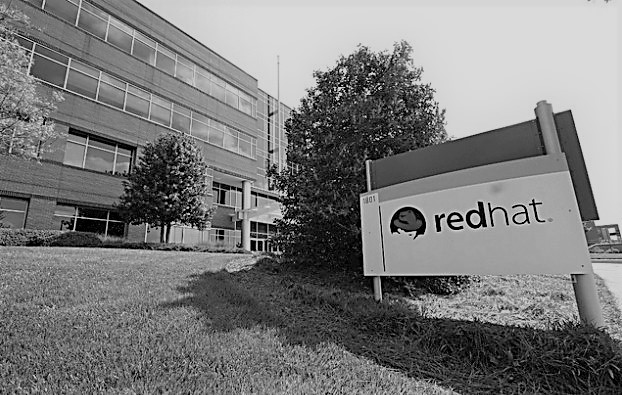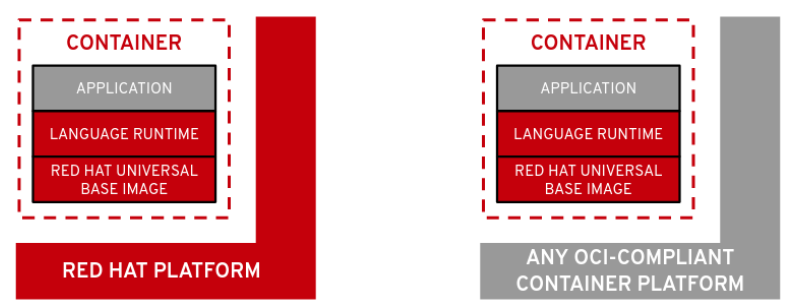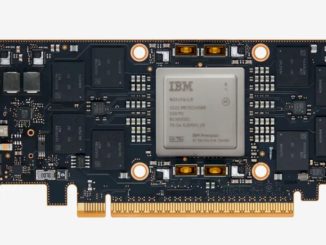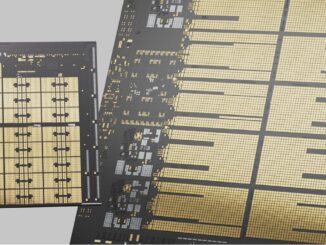
With any operating system, there is a tension between leaving something that is stable and that works alone and adding new features to keep it relevant.
In recent years, what that has meant for operating system providers is addressing multicloud and hybrid cloud environments, containers, microservices, and Kubernetes, GPU acceleration, serverless computing, artificial intelligence in its many guises, and data analytics workloads. Red Hat has faced that challenge for more than a decade with its Red Hat Enterprise Linux operating system, by far the most popular commercially supported Linux in the world, and the much-anticipated RHEL 8, which went into beta last year and became general available this week at the company’s Red Hat Summit user conference in Boston, is another testament to the balancing act that Red Hat has been pulling off for more than two decades in the enterprise.
It is important to remember what Red Hat has accomplished with RHEL, and why IBM is keen to spend a fortune acquiring it. A new Red Hat-sponsored IDC study says software and applications running on RHEL will drive more than $10 trillion in business revenues worldwide this year – and has had to serve as the junction between the innovation going on upstream among the scores of open-source communities and the enterprise customers that are looking for that OS that they not only can count on will be stable for the long haul but also be able to roll with the myriad changes occurring all around it, according to Stefanie Chiras, vice president and general manager of Red Hat’s RHEL business unit. The company sees an opportunity to make RHEL the port that enterprises can cling to while everything whirls around them.
Chiras, speaking during a session at the Red Hat Summit event, said RHEL 8 is a redefined operating system that the company used to pull many of its assets together to offer organizations a more complete Linux stack rather than a lineup of individual products.
“We wanted to use this as a launching point to really show the industry that Red Hat is an enterprise software portfolio company, not a product company,” she said. “We took RHEL 8 and we took steps into all these spaces that we see all of our customers taking to move their datacenters forward. … There’s so much change in the IT today, everything from changing applications spaces to machine learning and deep learning and AI. There are changes in the hardware, with GPU and FPGA acceleration. There are changes to deployment models, whether it’s VMs or containers, and changes where you can deploy: you can deploy on-prem, you can deploy in the public cloud, you can deploy in multiple public clouds. All this change is happening, and it’s allowing the customers more flexibility and more agility to do innovation faster. But at the end of the day, with all that change, something has to stay the same so that the work you did yesterday still provides you benefits next month and in the next deployment and the next deployment and that’s what Linux is today. Linux is that one thing that doesn’t change. It’s foundational to why clouds are here, it’s foundational to why containers are here. AI is all being written on Linux.”
RHEL 8 marks a number of shifts for Red Hat, not the least of which it being the last release before the company becomes part of IBM. Big Blue in October 2018 announced plans to acquire Red Hat for $34 billion, taking a significant step forward in its years-long initiative to become an even larger enterprise software player and put its hardware-first legacy farther into the rear-view mirror. Red Hat is using RHEL 8 to fully jump into the growing multicloud and hybrid cloud worlds, introducing new features while folding established technologies into the OS.
The goal with RHEL 8 – which was five years in the making and had 40,000 downloads during the beta program – was to make it adaptable, faster and easier to use at a time when the IT world is becoming more complex and more distributed, according to Brian Gracely, director of product strategy for Red Hat. Application Streams, which enables developers to more easily pick and choose when to patch or update applications without impacting the underlying OS, is one of those features that addresses the dual demand from customers for stability and adaptability while making RHEL easier for an enterprise to work with. It’s part of the RHEL subscription.
“One of the things about RHEL 8 that people love is the fact that this is a stable operating system,” Gracely tells The Next Platform. “For an operating system, they love to have this long-term support so they can continue to run it for a long period of time. But it’s also become the thing that people look at as their place to get trusted software. Every new release of RHEL that comes out is considerably bigger than the last one. It’s not that the operating system is bigger, it’s that people are demanding we put more packages in it and that’s a good thing. People trust Red Hat to get everything from Firefox browsers to the newest version of a billion-dollar framework or whatever it may be. The flip side to that is that while people want the operating system to be supported for long periods of time, they don’t necessarily want a 10-year-old version of Fedora or a 10-year-old version of Ruby.”
There are myriad features that have been added to the operating system. Red Hat folded the Insights product – which uses predictive analytics to identify and remediate problems in the system around performance, availability and security – into the operating system, while Smart Management is designed to reduce complexity by automating management, patching and provisioning of deployments in multiple locations, including on-premises and in the public cloud. Smart Management also is embedded into RHEL 8.
Another key feature is the Universal Base Image (UBI), which also was built with the hybrid cloud and containers in mind. It was adopted with ISVs in mind, Gunnar Hellekson, senior director for product management for RHEL, said during a session at the Red Hat Summit. It’s a userspace image in RHEL that developers can use to built Red Hat-certified containers and containerized applications, even those developers that don’t have a RHEL subscription. Red Hat had been offering RHEL images since RHEL 7, giving customers certified and up-to-date containers for enterprises. There was compatibility and portability when running RHEL container images on RHEL container hosts, but they were difficult toshare with others, even other RHEL customers or partners, the company said.
With UBI, a developer can build a containerized application, send it to a container registry server and then share it. Developers can run those applications where they want, though will get other benefits – such as RHEL lifecycle and support from Red Hat – when run on RHEL or Red Hat’s OpenShift container platform.
“In the previous world, if you were an application developer, you would build your application and then you would work with Linux vendors or Microsoft to get certified,” Gracely sad. “You run on this operating system, but you didn’t have to really care about the operating systems. In the container world, that line gets a little blurrier. What a container is is your application or dependencies, but it’s also central to userspace about an operating system. You have to package that userspace of the operating system with your application. In tactical parlance, that’s a pretty simple thing to do. In commercial terms, what was happening was the applications vendors were saying, ‘I don’t want to get myself into a spot where I’m shipping something that I can’t support or where I get in the middle of a licensing challenge.’”
Red Hat wasn’t making that situation easier, “so we saw people were using Fedora or central apps or some other variant that they had to package together. What we’re doing with the Universal Based Images is saying, ‘Look, we know that you would like to ship it with RHEL. If we made it easier for you, you would like to ship it with RHEL because RHEL has such a big footprint. You’d like to make sure that that compatibility would just work.’ What UBI does is takes the part RHEL that the ISVs are going to need and makes that free for them to be able to get this Universal Base Image but also to distribute this Universal Base Image. They now can distribute their application with this RHEL Universal Base Image. What it does for them is say, ‘OK, I don’t have to worry about any licensing conflicts but I also just get compatability from a RHEL perspective.’”
The enterprise space is broad and more ISVs and companies are leveraging containers, so Red Hat removed friction from the process to make it easier for these people to ship those containers on RHEL.






Be the first to comment